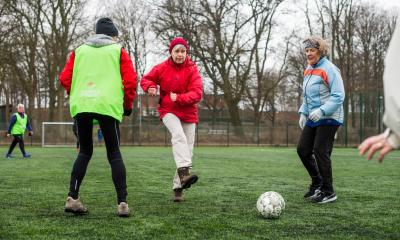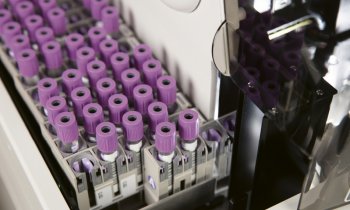
Image source: Unsplash/Annie Spratt
News • Cardiovascular disease prevention
Why a good night's sleep can save your heart
In a new study, researchers at Lund University and Uppsala University have seen a clear connection between how long a person sleeps and a number of biomarkers linked to cardiometabolic diseases such as cardiovascular disease and type 2 diabetes.
“With greater knowledge of the actual mechanisms of disease development, the possibilities for a more specific and targeted treatment increase”, says Sölve Elmståhl, one of the researchers behind the study.
Previous research shows that too little sleep leads to an increased risk of diseases such as cardiovascular disease, diabetes and obesity. In many cases, researchers suspect that it is the disease that causes sleep disorders, but it may also be that a lack of, or too much, sleep contributes to a person becoming ill. In a new study, a research team at Lund University and Uppsala University have studied the relationship between sleep and biomarkers that were previously linked to cardiometabolic diseases such as cardiovascular disease and type 2 diabetes.
Are the sleep disorders responsible for the protein markers changing? Which is the chicken and which is the egg?
Sölve Elmståhl
The research community needs more knowledge about the link between sleep disorders and various cardiometabolic diseases. “We already know that there are proteins or biomarkers in the blood that are strongly linked to cardiovascular and metabolic diseases. This is one of the first studies to look at the relationship between biomarkers and sleep disorders to see if there is a connection. There is an extremely complex pattern behind disease development. We hope to be able to contribute with information on possible pathways for disease development”, says Sölve Elmståhl, professor of geriatrics and coordinator of the strategic research area (SRA) EpiHealth at Lund University.
The new study used data from the SRA EpiHealth responsible for the population study of 25 000 people living in Malmö and Uppsala in the 45–75 age group. An analysis was carried out of blood samples stored in a biobank from 2430 people who had answered questions about their sleep. About 90 per cent of the participants slept a normal duration, while 8 per cent slept less than six hours per night and 4 per cent slept more than nine hours.
With the help of tailor-made new technology, it is now possible to study many proteins in blood plasma at the same time. The study examined 243 different proteins linked to cardiometabolic diseases. Five of the proteins stood out in the study – follistatin (FS), matrix metallopeptidase 9 (MMP9), urokinase receptor (UPAR), adrenomedullin (ADM) and kidney injury molecule (KIM) – presenting a U-shaped association with sleep duration. The levels of the biomarkers were high in subjects with short sleep duration, but decreased during normal sleep, increasing again in those with more than nine hours of sleep. The curve looks like a U when the data is displayed.
Previously, researchers found a link between the MMP9, FS and UPAR proteins and inflammatory activity in the heart. The biomarker KIM has been linked to heart function, while the protein ADM has been linked to sleep apnoea and the risk of suffering a myocardial infarction. “The results from our cross-sectional study fit well with findings from previous publications. We have candidates that can explain possible mechanisms for how various cardiometabolic diseases develop, but we need to confirm this in other longitudinal studies and check if the individuals develop a condition at repeated measurement points”, says Sölve Elmståhl and continues: “Are the sleep disorders responsible for the protein markers changing? Which is the chicken and which is the egg? It is probably not a single mechanism but multiple mechanisms that contribute to disease development. This is an example of collaboration between researchers from Lund University and Uppsala University, which is primarily focused on understanding the mechanisms that lead to the development of diseases. But I hope that in the future it could be part of the development of better treatments and new drug targets.”
Source: Lund University
27.08.2021











